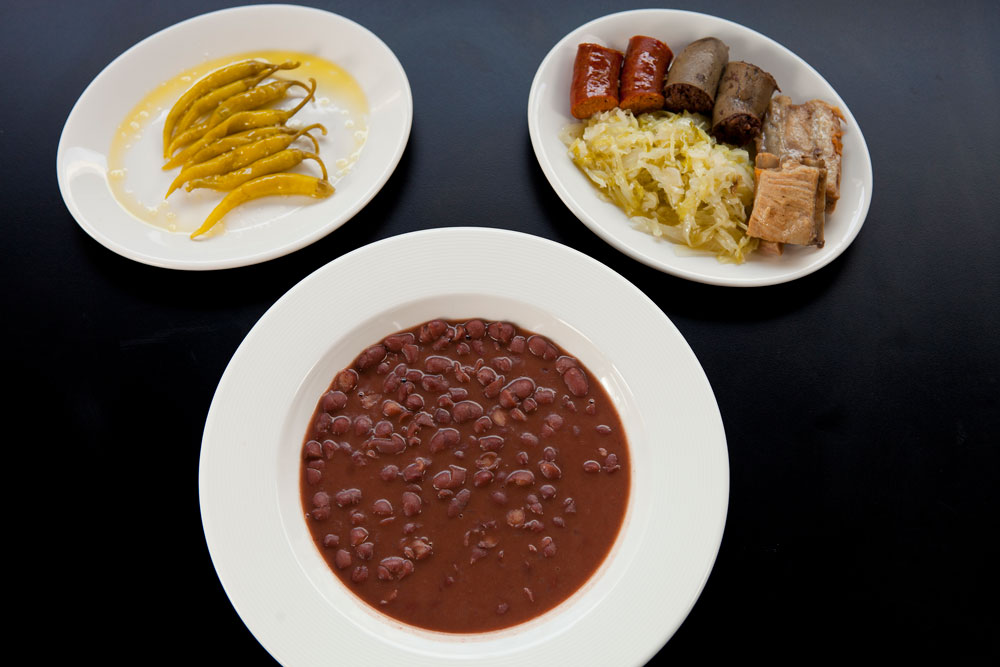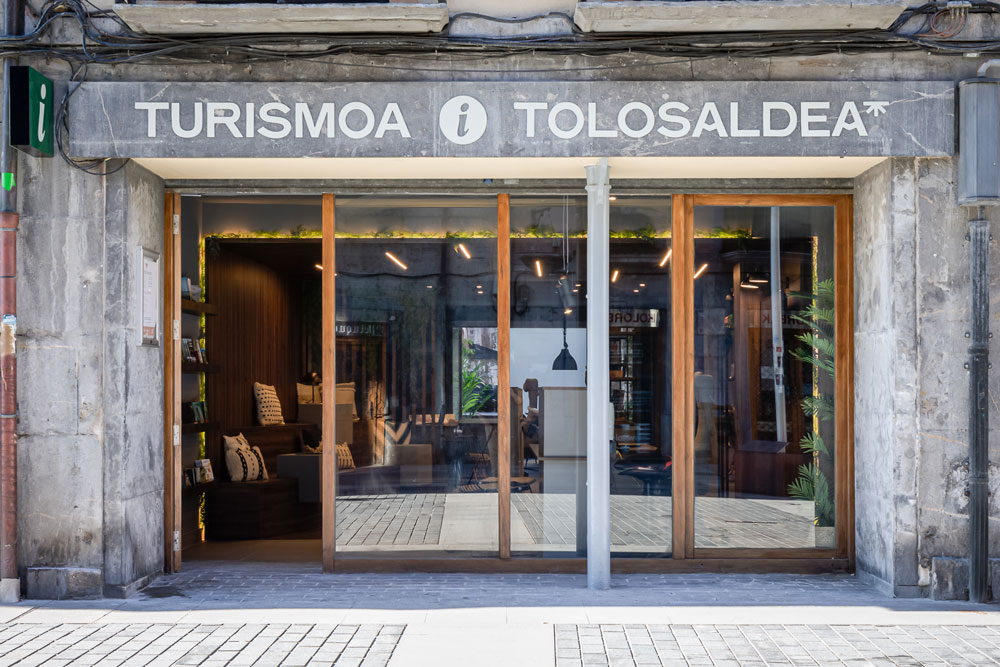Mondeju, a special sausage
Whatismondeju?
TolosaldeaandGoierri´sproduct
There is not much room to find the mondeju, a sausage like pudding, which mixes calories and sheep fat with vegetables and eggs, especially in autumn, from October to January.
It is usually done in rural villages closest to the Aralar Natural Park and with the greatest pastoral tradition. In Tolosaldea stand out Abaltzisqueta, Amezketa, Orendain, or Bedaio, while in Goierri Zaldibia is the highest exponent of Ardiki Day at the end of October.

One more "sacrament" for a bean meal
The mondeju (also called mondejo), in more and more places, is one more companion to the Tolosa beans, along with other traditional sacraments (side dishes): Ibarra chili peppers, vegetables black pudding, cooked chorizo, cabbage, and pork rib. They also serve as a pintxo snack before starting with beans.
Ancientoriginofthemondejus
The mondeju arose from the millennial tradition of pastoralism. More than a century ago, when the shepherds of Aralar went down to the farms in the autumn, they wanted to profit from the sheep they were planning to remove from the flock. Hence they created mondejus to make better use of all parts of the sheep.
What'samondejumadeof?
There are two kinds of mondejus — white (though yellowish and black). The original recipe for the white mondeju includes vegetables such as leek and onion, guts and latxa sheep fat.
Unlike black pudding, the mixture is bound with egg rather than with the blood. It’s seasoned with pepper and some people use parsley. In the case of the black mondeju, the egg is replaced by sheep’s blood.
Arecipethathassurvivedthankstowomen
The history of mondeju is also written by women, and its recipe has been passed down from mothers to daughters in many of the farmhouses in the Aralar area. When talking about mondeju, it is as essential to mention the work of the shepherds as it is to mention the women who have produced them and have kept their recipes generation after generation.
Amondejumenu
There are many ways of eating mondeju: it is mostly served simmered for about half an hour. Some people then use the broth as a soup, known as ‘Mondeju zopa‘.
The ‘Mondeju zopa’ is the first course on the typical autumn menu in the villages on the slopes of Aralar. The menu consists of mondeju zopa, mondeju, sheep stew and latxa sheep’s cheese.
Mondeju can also be eaten fried or roasted on a grill.
MondejuandwinefairinAmezketa
At the end of September, Amezketa holds a fair to highlight the value of mondeju and to keep alive the tradition, which is much more than a gastronomic tradition, of this almost exclusive product.
A fair where you can taste mondeju made by different producers, accompanied by wines from the Basque Country. In short, a festival to give the mondeju its place in Amezketa.
From eating only at home to being coveted in Basque cuisine
History repeats itself: Tolosa beans were a daily product on farms, and only surplus was sold. The txakoli was the wine that was made for the house. And the mondeju has been a recipe for exploitation, undervalued in restoration. But the products have evolved, improving the taste and balance between the ingredients. And it’s an increasingly precious product in today’s gastronomy.
WheretoeatmondejuinTolosaldea?
More and more restaurants in the region offer menus. There are also bars that offer it as a pintxo. It’s hard to find outside Tolosaldea or the Goierri!
- Altzo Ostatua (Altzo)
- Ikatza (Tolosa)
- Iturri ondo (Asteasu)
- Hika (Amasa)
- Casa Julian (Tolosa) Only ox mondeju.
WheretobuyinTolosaldea?
You can buy mondejus at most charcuterie shops in the region. We propose the butchers Joxe Mari Barriola and Altuna, because they are reference for artisanal sausages.
Where to buyNovelty:amondejumadeofox
Although the mondeju is only made of sheep, the charcuterie Joxe Mari Barriola and the manager of the Casa Julián grill in Tolosa, Xabi Gorrotxategi, have created a new variety of mondejus, replacing the sheep with the ox, with the aim of taking advantage of all parts of the animal. Then they grill it in the grill itself.


















